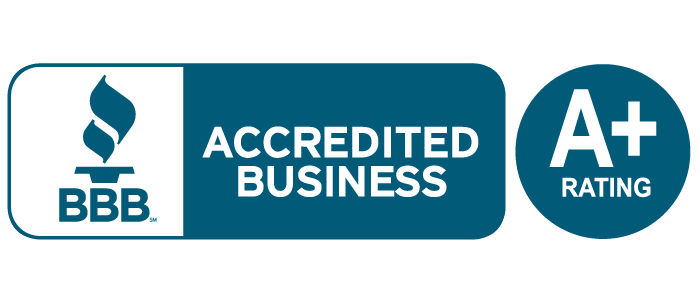
Reaching the credit limit on your credit card can happen for many reasons—a sudden financial emergency, a period of unemployment, or simply overspending. In this article, I’ll walk you through the basics of being maxed out: what it means, why it matters, and—most importantly—what you can do about it.
Table of Contents
When Is Your Credit Card Maxed Out?
A maxed-out credit card means you’ve used up all (or nearly all) of the available credit on your account. That leaves little to no room for additional spending and can trigger over-limit fees, higher interest rates, and anxiety about paying it down.
Key signs you’re maxed out include:
- Declined transactions: Any new purchase might be rejected due to insufficient available credit.
- Over-limit fees or penalties: Some cards charge an extra fee if you exceed your limit.
- Minimum payment cycle: Even if you are below your limit, you may be borrowing too much if you’re only able to make minimum payments each month
Hitting your limit isn’t always intentional—it can be the result of unexpected bills, job loss, or other financial setbacks. Regardless of how you got here, the first step is recognizing the situation and making a plan to address it.
Is It OK to Max Out a Credit Card?
In most cases, no—regularly hitting your credit limit is risky. While it’s not unusual for Canadians to put a large expense on a credit card for convenience, carrying a maxed-out balance from month to month has consequences:
- Mounting interest costs: The more and longer you carry a balance, the more interest you’ll pay. Card issuers may also impose penalty APRs, often jumping to 29.99% or higher
- Potential over-limit fees: You may face extra fees and charges if you exceed your credit line.
- Lack of financial safety net: Without extra room on your limit, you’re more vulnerable if another unexpected expense arises.
- Lower credit score: Regularly using most of your credit limit will harm your credit score.
For a one-time emergency, you might have no choice, but repeatedly maxing out a card often signals that monthly expenses are exceeding your income. If that’s the case, you’ll want to look at your spending habits, budget, or explore debt relief strategies before the situation escalates.
How Bad Does Maxing Out Your Credit Hurt Your Credit Score
Maxing out your credit cards can significantly damage your credit score. This happens because your credit utilization ratio—the percentage of available credit you’re using—jumps dramatically. Credit utilization accounts for about 30% of your credit score, making it the second most influential factor behind payment history.
When you max out a card, your utilization ratio approaches 100% on that account, sending a red flag to lenders that you might be financially overextended. Even worse, the impact compounds if you max out multiple cards. Credit scoring models interpret this pattern as increased risk, potentially triggering higher interest rates on future loans or credit denials.
The good news? Credit utilization has no “memory”. Unlike late payments which can affect your score for years, reducing your balances can quickly improve your score within 30-60 days after lenders report lower balances to the credit bureaus. We recommend using less than 30% of your total limit to maintain a healthier credit score—ideally even less if you can manage it.
What to Do If Your Credit Cards Are Maxed Out
If you’ve already hit your credit limit (or are close to it), the best time to act is now. Below are practical steps for both immediate relief and long-term debt reduction.
Stop Further Credit Spending
Start by pausing all credit card usage by putting the card away and use cash or a debit card to avoid running up more debt. Think of it as giving yourself space to breathe while you focus on paying off what you already owe. Even small cuts to non-essential expenses can help you avoid adding more debt on top of an already high balance.
Make At Least the Minimum Payment on Time
On-time payments help you avoid costly penalty fees or interest rate hikes. Each month that you make even the basic required payment, you protect your credit score from additional damage and keep your account in better standing while you work on bigger solutions.
Create a Realistic Budget
A budget is just a plan for your money—nothing more. Start by mapping out your essential expenses (housing, food, utilities) and income sources. Identify areas where you can trim costs, even temporarily, and commit that freed-up cash to your credit card balance. The goal isn’t to cut all the fun out of your life; it’s to find a balance that lets you manage your debts without constant anxiety.
Pay Down Your Balance
Once you know how much extra you can afford each month, pick a repayment strategy.
- Snowball Method: Pay off the smallest balances first to see quick “wins” and stay motivated.
- Avalanche Method: Focus on the highest interest rate debt first to save more money overall.
Negotiate with Your Credit Card Issuer
Credit card companies want to be repaid, so they may offer short-term interest relief or reduced payments if you explain your situation. It can feel nerve-wracking to make that call, but you’re simply asking about options, not admitting failure. Keep notes of who you spoke with, any interest rate changes, and how long any reduced-payment arrangement lasts. Clear communication can prevent misunderstandings down the road.
Consider Credit Card Debt Relief
If your budget, payment strategies, or negotiations still leave you feeling stuck, it may be time for more comprehensive help. Here are four common approaches for relief from credit card debt:
-
Debt Consolidation Loan: Rolling multiple balances into a single loan can simplify your payments. If you have good credit or collateral (like a car or home equity), you may qualify for a new personal loan at lower interest rate. Just be sure you’ve addressed any overspending so you don’t end up with new credit card debt on top of the consolidation loan.
-
Balance Transfers: Some balance transfer credit cards offer a lower or 0% introductory rate on transferred balances. This can help you pay down your principal faster. Be mindful of the promotional period—once it ends, rates can jump significantly. If you haven’t tackled the reasons you ran up debt in the first place, a balance transfer might only delay the bigger issue.
-
Credit Counselling: A reputable, not-for-profit credit counselling agency can help you create a debt management plan, often negotiating lower interest rates or a freeze on additional fees. You’ll still repay your debts in full, but the agency provides budgeting advice and oversees your consolidated monthly payment to creditors. Keep in mind that there may be modest fees involved, and your plan’s success hinges on having enough consistent income to meet the agreed payment schedule.
-
Consumer Proposal: This is a legal debt settlement strategy available in Canada where you repay only a portion of your debts, based on what you can realistically afford. Interest stops accumulating, and you gain immediate protection from collection actions. A Licensed Insolvency Trustee will help you create and file the proposal, giving you a more manageable payment plan.
-
Bankruptcy: Filing bankruptcy is a last-resort solution if you truly can’t repay what you owe. While it has a significant effect on your credit, it also provides a legal way to eliminate most debts if your finances have become unmanageable. Always consult a Licensed Insolvency Trustee to determine if this option is appropriate for your situation.
Frequently Asked Questions (FAQ)
-
How much credit card debt is too much?
If you find yourself unable to pay more than the minimum, or if you’re missing essential living expenses to cover credit card bills, it’s likely too much. At that point, exploring consolidation, a consumer proposal, or other debt solutions is wise.
-
Can you cancel a maxed-out credit card?
You can request cancellation, but you remain responsible for the balance. Interest will keep accruing until the debt is paid in full. Cancelling can also affect your credit utilization ratio and history, so weigh the pros and cons first.
-
Can you get a credit limit increase on a maxed-out card?
It depends on your credit rating and payment history. If you have a good credit score and this is a one-time or temporary bump against your limit, your credit card company may increase your limit. However, if you’ve missed payments or have too much other credit, most lenders won’t increase your limit further.
-
Can I max out my credit cards before filing bankruptcy?
We don’t recommend it. Recent large charges or cash advances can be seen as suspicious and if found to be fraudulent, the court can delay or disallow your discharge for these debts. It’s best to speak to a Licensed Insolvency Trustee before making any big moves.
Asking For Help
Maxing out a credit card can happen to anyone, especially during challenging times or unexpected life events. But once you’re at your limit, the combination of interest charges, fees, and credit score impacts can feel overwhelming. The good news is there are ways to regain control.
If you need more comprehensive help, explore debt consolidation, consumer proposals, or other professional solutions. A Licensed Insolvency Trustee like Hoyes Michalos can help you assess your debts, budget, and repayment options, so you can move forward with confidence.
Ready to take action? Contact us today for a free, confidential consultation. You don’t have to face maxed-out credit cards alone—together, we can find a solution that works for you.





